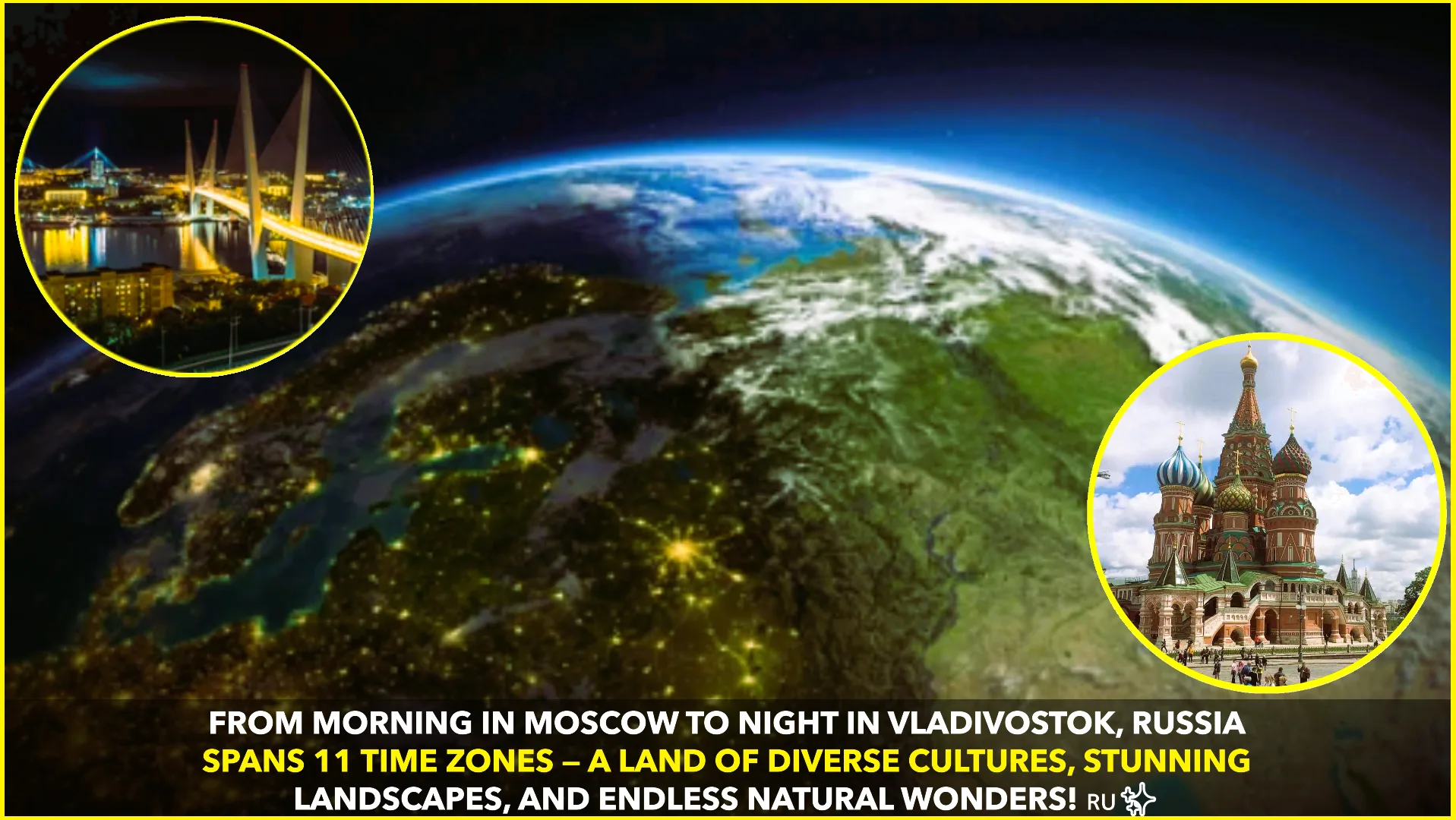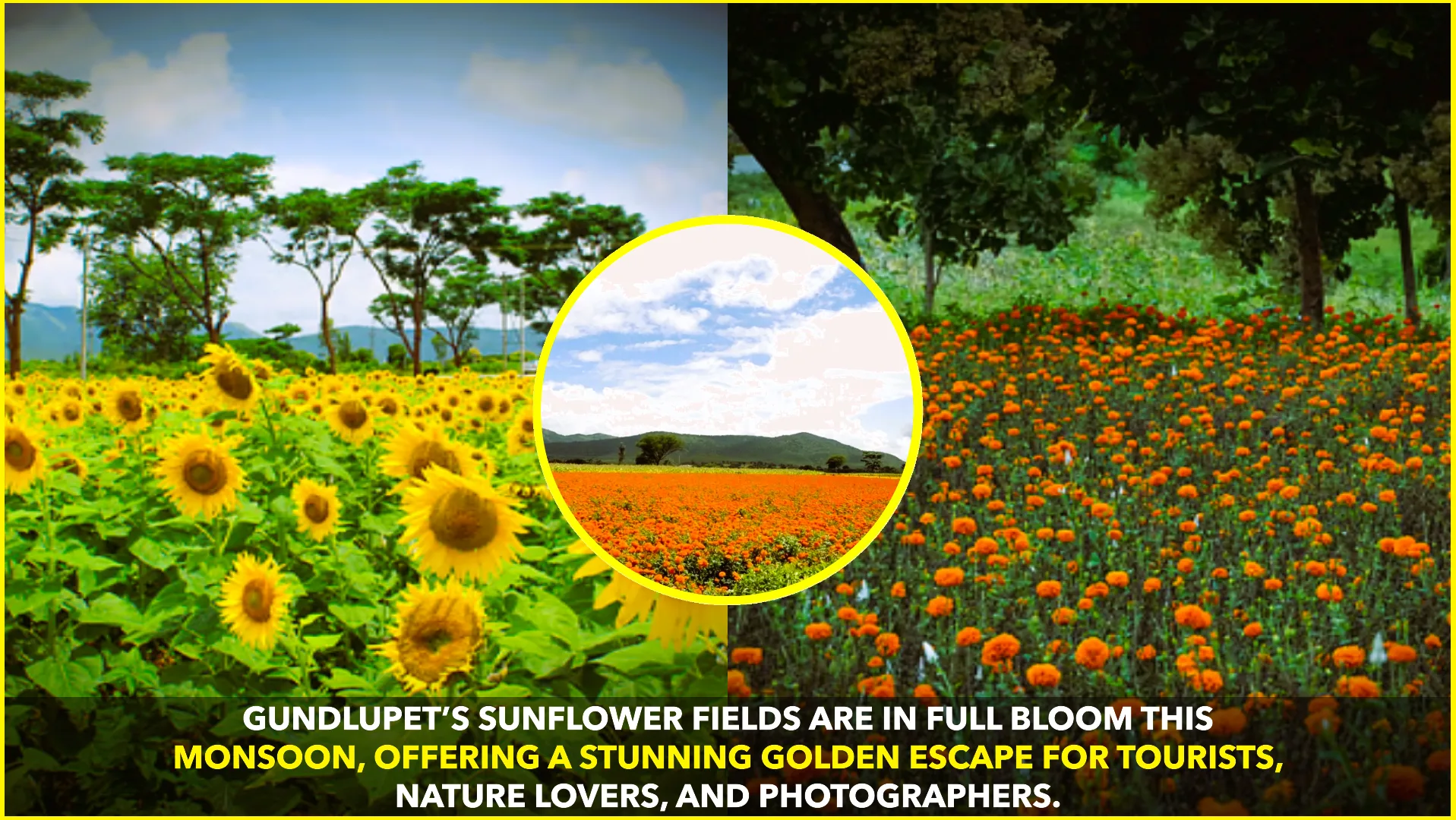“Winter Wonders: A Spectacular Indian Sojourn for Tourists (tourist places) – Embrace the Magic of Culture, Cuisine, and Charm Amidst the Crisp Air and Vibrant Landscapes.”
Exploring India in winter offers a unique and delightful experience, as the weather is generally more pleasant, and many regions come alive with cultural festivals and natural beauty. Here’s a guide to the top 10 must-visit places in India during winter, along with estimated budgets and captivating images to inspire your travel plans.
Kashmir – The Paradise on Earth

- Budget: ₹25,000 – ₹40,000 for a week
- The snow-capped peaks, frozen lakes, and charming houseboats make Kashmir a winter wonderland. Explore Gulmarg for skiing, Pahalgam for its scenic landscapes, and the Dal Lake in Srinagar for a shikara ride.
Exploring the Enchanting Beauty of Kashmir: A Comprehensive Travel Guide
Nestled in the lap of the Himalayas, Kashmir is a paradise on Earth, renowned for its breathtaking landscapes, pristine lakes, and rich cultural heritage. Visiting this region in winter adds a layer of charm with snow-capped mountains and frozen lakes. Here’s a comprehensive guide on how to make the most of your trip to Kashmir.
1. Planning Your Trip:
- Choose the Right Time: The best time to visit Kashmir is from October to March, when the weather is cold, and the region is covered in snow, creating a picturesque winter wonderland.
- Getting There: Srinagar, the summer capital of Jammu and Kashmir, has an international airport. You can also reach by road from Jammu, and there’s a scenic train route from Jammu to Banihal.
2. Accommodation:
- Srinagar offers a variety of accommodation options, from luxurious houseboats on Dal Lake to hotels and guesthouses. Pahalgam and Gulmarg are also popular destinations with charming hotels and resorts.
3. Must-Visit Places:
- Dal Lake: Take a shikara ride on Dal Lake, surrounded by snow-covered mountains and vibrant houseboats. Stay in a houseboat for a unique and unforgettable experience.
- Gulmarg: Known for its ski resorts, Gulmarg is a winter sports haven. The Gulmarg Gondola is one of the highest cable cars in the world, offering panoramic views of the snow-clad peaks.
- Pahalgam: This quaint town is famous for Betaab Valley and the Lidder River. Enjoy a walk along the riverbank or explore the surrounding meadows.
- Shalimar Bagh and Nishat Bagh: Explore the Mughal Gardens in Srinagar, showcasing stunning architecture and meticulously manicured lawns.
4. Cuisine:
- Indulge in Kashmiri cuisine, known for its rich flavors. Try the famous Wazwan feast, which includes a variety of delectable dishes like Rogan Josh, Yakhni, and Dum Aloo.
5. Cultural Experience:
- Visit Shankaracharya Temple for a panoramic view of Srinagar. Explore the Jamia Masjid and Hazratbal Shrine to immerse yourself in the local culture and spirituality.
- Don’t miss the opportunity to shop for traditional Kashmiri handicrafts, including Pashmina shawls, carpets, and papier-mâché items.
6. Adventure Activities:
- In Gulmarg, indulge in skiing, snowboarding, and trekking during the winter months. The meadows transform into a snowy playground for adventure enthusiasts.
- Take a Gondola ride in Gulmarg for an adrenaline-pumping experience and breathtaking views.
7. Safety and Local Tips:
- Check travel advisories before planning your trip, and keep track of weather conditions.
- Dress in layers to stay warm, and carry essentials like gloves, a hat, and sturdy boots, especially if you plan on indulging in winter sports.
- Respect local customs and traditions, and interact with the friendly locals to enrich your cultural experience.
Shimla
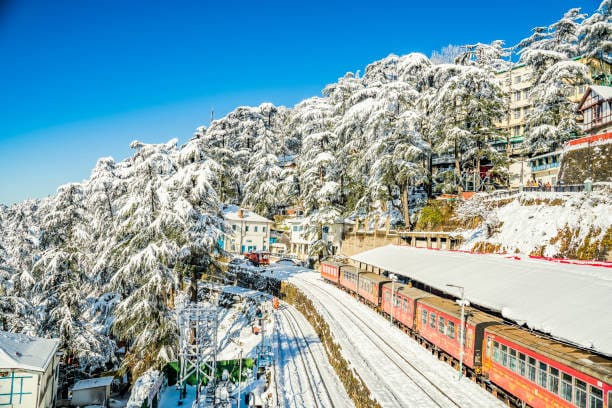
The Kalka to Shimla railway is a 2 ft 6 in (762 mm) narrow-gauge railway in North India which traverses a mostly-mountainous route from Kalka to Shimla.
- Budget: ₹15,000 – ₹25,000 for a week
- Shimla’s colonial architecture, snow-covered streets, and the Mall Road are enchanting in winter. Enjoy winter sports at Kufri and take the UNESCO-listed toy train for breathtaking views.
Discovering the Charms of Shimla: A Comprehensive Travel Guide
Nestled in the lap of the Himalayas, Shimla, the capital city of Himachal Pradesh, is a charming hill station that offers a perfect blend of natural beauty, colonial architecture, and a vibrant local culture. Here’s a comprehensive guide on how to plan your trip to Shimla for an unforgettable experience.
1. Planning Your Trip:
- Best Time to Visit: Shimla is a year-round destination, but the most popular time is from March to June when the weather is pleasant. Winter enthusiasts may prefer the snowy months of December to February.
- Getting There: The nearest airport is in Jubbarhatti, and the Kalka-Shimla Railway, a UNESCO World Heritage site, offers a scenic train journey. The city is also well-connected by road.
2. Accommodation:
- Shimla offers a range of accommodation options, from luxury hotels to budget-friendly guesthouses. Popular areas to stay include The Ridge, Mall Road, and Chotta Shimla.
3. Must-Visit Places:
- The Ridge: This open space offers panoramic views of the surrounding mountains. The Christ Church on The Ridge is a prominent landmark.
- Mall Road: A bustling street lined with shops, cafes, and colonial-style buildings. Ideal for leisurely strolls and shopping for local handicrafts.
- Jakhu Temple: Dedicated to Lord Hanuman, this temple is situated atop Jakhu Hill, providing stunning views of Shimla.
- Kufri: A short drive from Shimla, Kufri is known for its picturesque landscapes and the Himalayan Nature Park.
4. Cultural Experience:
- Visit the Shimla State Museum to explore the rich cultural heritage of Himachal Pradesh, showcasing artifacts and handicrafts.
- Attend a Himachali cultural show to witness traditional music and dance performances.
5. Adventure Activities:
- Enjoy horse riding on The Ridge or indulge in adventure activities like paragliding and zip-lining in nearby locations.
- During winter, experience the thrill of ice skating on the open-air ice rink at Lakkar Bazaar.
6. Local Cuisine:
- Taste local Himachali cuisine, including dishes like Sidu, Kaale Channe Ka Khatta, and Madra. Don’t miss trying the famous Himachali Red Rice.
7. Shopping:
- Mall Road is a shopper’s paradise. Explore local markets for traditional Himachali handicrafts, woollens, and souvenirs.
8. Transportation within Shimla:
- The city offers various modes of transportation, including taxis, buses, and horse-drawn carriages. Walking is an excellent way to explore the compact city center.
9. Weather and Clothing:
- Shimla experiences a temperate climate. Summers are mild, and winters can be chilly with snowfall. Pack accordingly, with warm clothes in winter.
10. Safety and Local Etiquette:
- Shimla is generally safe for tourists. Exercise standard precautions regarding belongings and be aware of your surroundings.
- Respect local customs and traditions, and interact with the friendly locals to enhance your cultural experience.
Auli – Skiing Paradise:
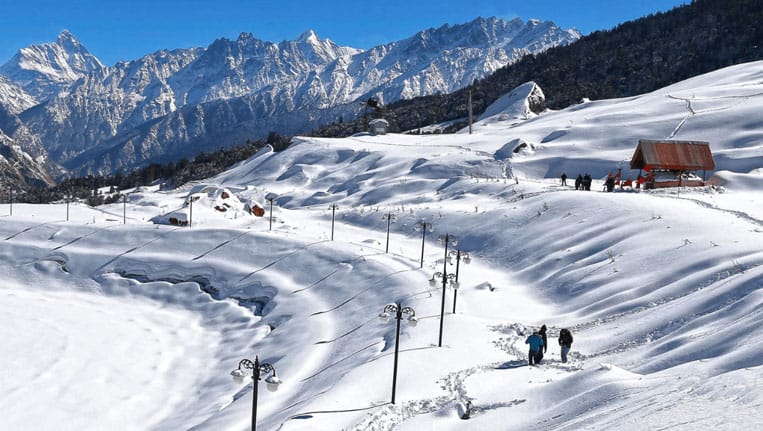
- Budget: ₹20,000 – ₹35,000 for a week
- Nestled in the Garhwal Himalayas, Auli is a skiing haven with pristine slopes and panoramic views. The cable car ride offers a spectacular journey, and the clear winter skies make it a photographer’s delight.
Embarking on a Himalayan Adventure: A Comprehensive Guide to Visiting Auli
Nestled in the Garhwal Himalayas of Uttarakhand, Auli is a pristine destination renowned for its snow-covered slopes, panoramic views, and serene landscapes. Here’s a comprehensive guide on how to plan your trip to Auli for an unforgettable mountain retreat.
1. Planning Your Trip:
- Best Time to Visit: Auli is a year-round destination, but it is most popular for skiing from late December to February when the region is blanketed in snow. Summers (April to June) are ideal for trekking and enjoying the pleasant weather.
- Accessibility: The nearest airport is in Dehradun, and the nearest railway station is Rishikesh. Auli is well-connected by road, and a cable car from Joshimath makes the journey even more spectacular.
2. Accommodation:
- Auli offers a range of accommodation options, including resorts, hotels, and guesthouses. Many properties provide stunning views of the surrounding peaks.
3. Must-Visit Places:
- Auli Ski Resort: Auli is a skiing paradise with well-groomed slopes. The Auli Ski Resort offers equipment rental and professional instructors for both beginners and advanced skiers.
- Gurso Bugyal: A short trek from Auli, Gurso Bugyal is a picturesque meadow offering breathtaking views of Nanda Devi, Trishul, and Dron Parvat.
- Auli Artificial Lake: Surrounded by coniferous trees, this lake enhances the beauty of Auli. It is used for generating artificial snow for skiing during low-snow periods.
4. Adventure Activities:
- Apart from skiing, Auli offers thrilling experiences like trekking and camping. Kuari Pass Trek and Gorson Bugyal Trek are popular among trekkers.
- Take the ropeway from Joshimath to Auli for a mesmerizing journey with panoramic views of the Himalayas.
5. Weather and Clothing:
- Auli experiences cold weather, especially in winter. Pack accordingly with heavy woolens, gloves, and a sturdy pair of boots.
6. Local Cuisine:
- Relish local Garhwali cuisine, including dishes like Aloo Ke Gutke, Kafuli, and local sweets like Bal Mithai and Singori.
7. Shopping:
- Auli offers a limited shopping experience, but you can find local handicrafts and souvenirs in nearby towns like Joshimath.
8. Safety Tips:
- If you’re engaging in winter sports, ensure you are physically fit and follow safety guidelines provided by instructors.
- Respect the mountain environment and follow responsible tourism practices.
9. Cultural Experience:
- Explore the nearby town of Joshimath, home to the ancient Kalpavriksha and Narsingh Temples.
- Interact with locals to learn about their customs and traditions.
Rann of Kutch – White Desert Festival:
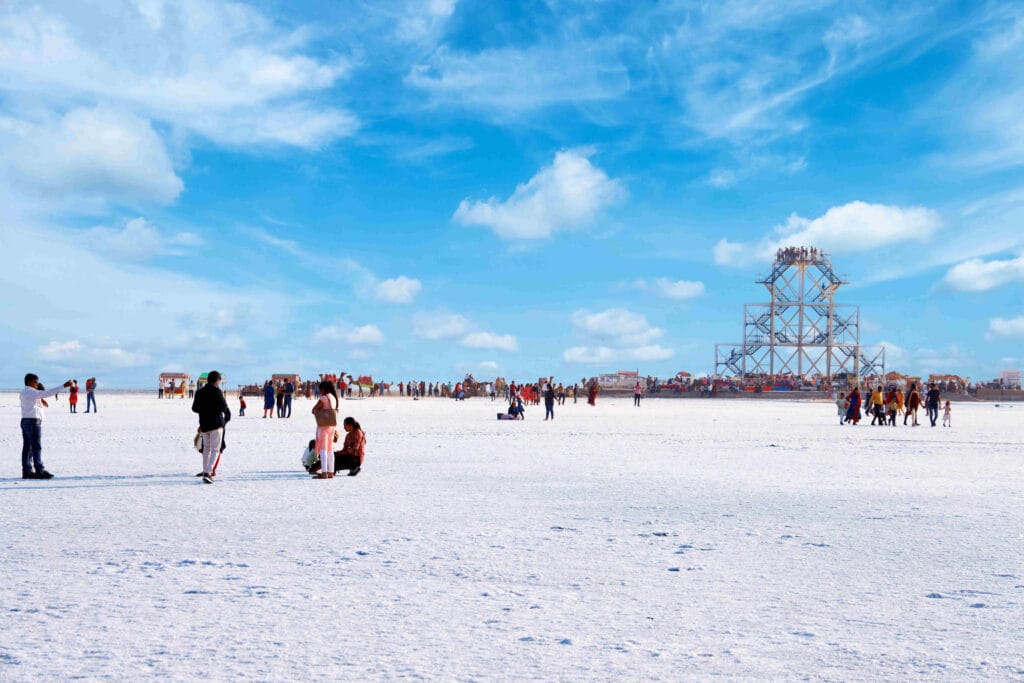
- Budget: ₹10,000 – ₹20,000 for a week
- Witness the surreal beauty of the white desert during the Rann Utsav. The vibrant culture, handicrafts, and the vast expanse of the salt desert under the full moon are magical experiences.
Experiencing the Spectacle of the Rann of Kutch – White Desert Festival: A Comprehensive Guide
Nestled in the heart of Gujarat, the Rann of Kutch is a surreal salt marsh that transforms into a mesmerizing spectacle during the White Desert Festival. Here’s a comprehensive guide to help you plan your visit to this unique and culturally rich event.
1. Planning Your Trip:
- Festival Timing: The White Desert Festival usually takes place from December to March when the Rann of Kutch is at its most enchanting, with the salt desert gleaming under the winter sun.
- Access Points: Bhuj is the gateway to the Rann of Kutch. The nearest airport is Bhuj Airport, and Bhuj Railway Station is well-connected to major cities. From Bhuj, hire a taxi or take a bus to reach the festival site.
2. Accommodation:
- Accommodations in Bhuj range from hotels to traditional homestays. It’s advisable to book in advance, especially during the festival period.
3. Must-Visit Places:
- White Rann: The vast expanse of the salt desert is the highlight. Witness the ethereal beauty as the moonlight transforms the landscape into a shimmering wonder.
- Kutch Museum: Located in Bhuj, this museum showcases the rich cultural heritage of the region, including artifacts and textiles.
- Mandvi Beach: If time permits, visit Mandvi to relax by the beach and explore the historic Vijay Vilas Palace.
4. Festival Highlights:
- Cultural Performances: Immerse yourself in folk music and dance performances by local artists. The rhythmic beats and vibrant costumes create a lively atmosphere.
- Crafts Bazaar: Explore the vibrant bazaar showcasing traditional Kutchi handicrafts. Purchase exquisite handwoven textiles, embroidered garments, and intricately crafted jewelry.
- Tented Accommodations: Experience staying in luxury tents set up specifically for the festival. These tents provide a unique blend of comfort and a rustic, desert ambiance.
5. Adventure Activities:
- Engage in camel safaris across the white desert. The vastness of the Rann and the tranquility of the surroundings make it a surreal experience.
- Participate in traditional games and activities organized during the festival, offering a glimpse into the local way of life.
6. Local Cuisine:
- Indulge in Kutchi cuisine, known for its spicy flavors. Try local delicacies like Kutchi Dabeli, Kutchi Bhakri, and the sweet treat, Dabeli.
7. Safety Tips:
- Wear comfortable clothing suitable for both sunny days and chilly nights. Sunscreen and sunglasses are essential during the day.
- Stay hydrated, especially in the arid climate, and carry a first aid kit.
8. Cultural Etiquette:
- Respect local customs and traditions. Seek permission before photographing locals, and participate respectfully in cultural events.
Jaipur – The Pink City:
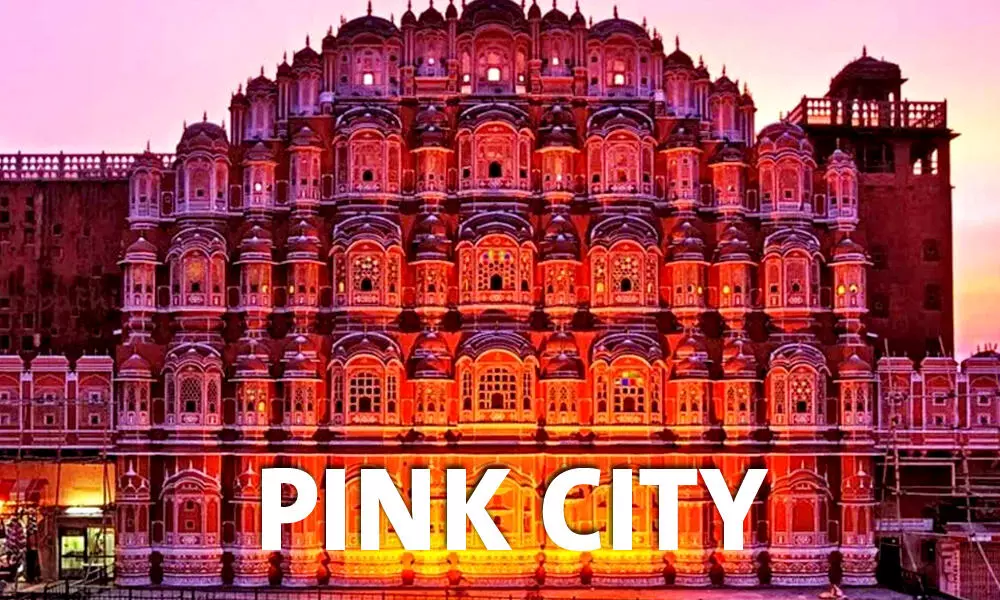
- Budget: ₹15,000 – ₹25,000 for a week
- Explore the historical forts and palaces of Jaipur, including Amber Fort, City Palace, and Hawa Mahal. The pleasant winter weather makes it ideal for sightseeing, and the local markets are perfect for shopping.
Exploring the Majesty of Jaipur: A Comprehensive Guide to the Pink City
Jaipur, the capital of Rajasthan, is a city adorned with vibrant colors, rich history, and architectural wonders. Known as the Pink City, it boasts of palaces, forts, and bustling markets. Here’s a comprehensive guide to help you plan your visit to this royal destination.
1. Planning Your Trip:
- Best Time to Visit: The ideal time to visit Jaipur is from October to March when the weather is pleasant. Summers can be hot, and monsoons bring occasional heavy rainfall.
- Accessibility: Jaipur has an international airport (Jaipur International Airport) and is well-connected by rail and road. The city is part of the Golden Triangle tourist circuit, making it easily accessible from Delhi and Agra.
2. Accommodation:
- Jaipur offers a range of accommodations, from heritage hotels to budget-friendly guesthouses. Stay in a heritage property to experience the regal charm of the city.
3. Must-Visit Places:
- Hawa Mahal (Palace of Winds): This iconic structure with its intricate façade is a symbol of Jaipur. Explore its unique architecture and panoramic views.
- City Palace: A majestic complex with palaces, courtyards, and museums. The City Palace offers a glimpse into Jaipur’s royal history.
- Amber Fort: Perched on a hill, Amber Fort is a stunning blend of Rajput and Mughal architecture. Take an elephant ride to the fort for a royal experience.
- Jantar Mantar: An astronomical observatory built by Maharaja Jai Singh II. Explore the unique instruments used for astronomical calculations.
4. Shopping in Jaipur:
- Visit the bustling markets of Jaipur for vibrant textiles, jewelry, and handicrafts. Johari Bazaar is famous for jewelry, while Bapu Bazaar is known for textiles and traditional Rajasthani attire.
- Don’t forget to shop for Jaipur’s renowned blue pottery and traditional Rajasthani mojris (shoes).
5. Cultural Experience:
- Witness a traditional Rajasthani dance and music performance in Chokhi Dhani, a cultural village on the outskirts of Jaipur.
- Attend the Light and Sound Show at Amer Fort, a captivating experience that narrates the history of the fort.
6. Local Cuisine:
- Indulge in Rajasthani delicacies like Dal Baati Churma, Laal Maas, and Ghewar. Lassiwala near MI Road is famous for its refreshing lassi.
7. City Exploration Tips:
- Hire a local guide to get insights into the history and culture of the city. Many guides are well-versed in the stories behind each monument.
- Use public transport or hire a local rickshaw for short distances within the city. This allows you to soak in the vibrant atmosphere.
8. Safety Tips:
- Dress modestly, especially when visiting religious sites. Carry a scarf or shawl to cover shoulders and knees.
- Stay hydrated, as the weather can be dry. Use sunscreen and wear a hat to protect yourself from the sun.
9. Unique Experiences:
- Take a hot air balloon ride for a panoramic view of the city and its surroundings.
- Explore the stepwell at Panna Meena ka Kund, a historic and picturesque water reservoir.
Varanasi – Spiritual Riverside City:
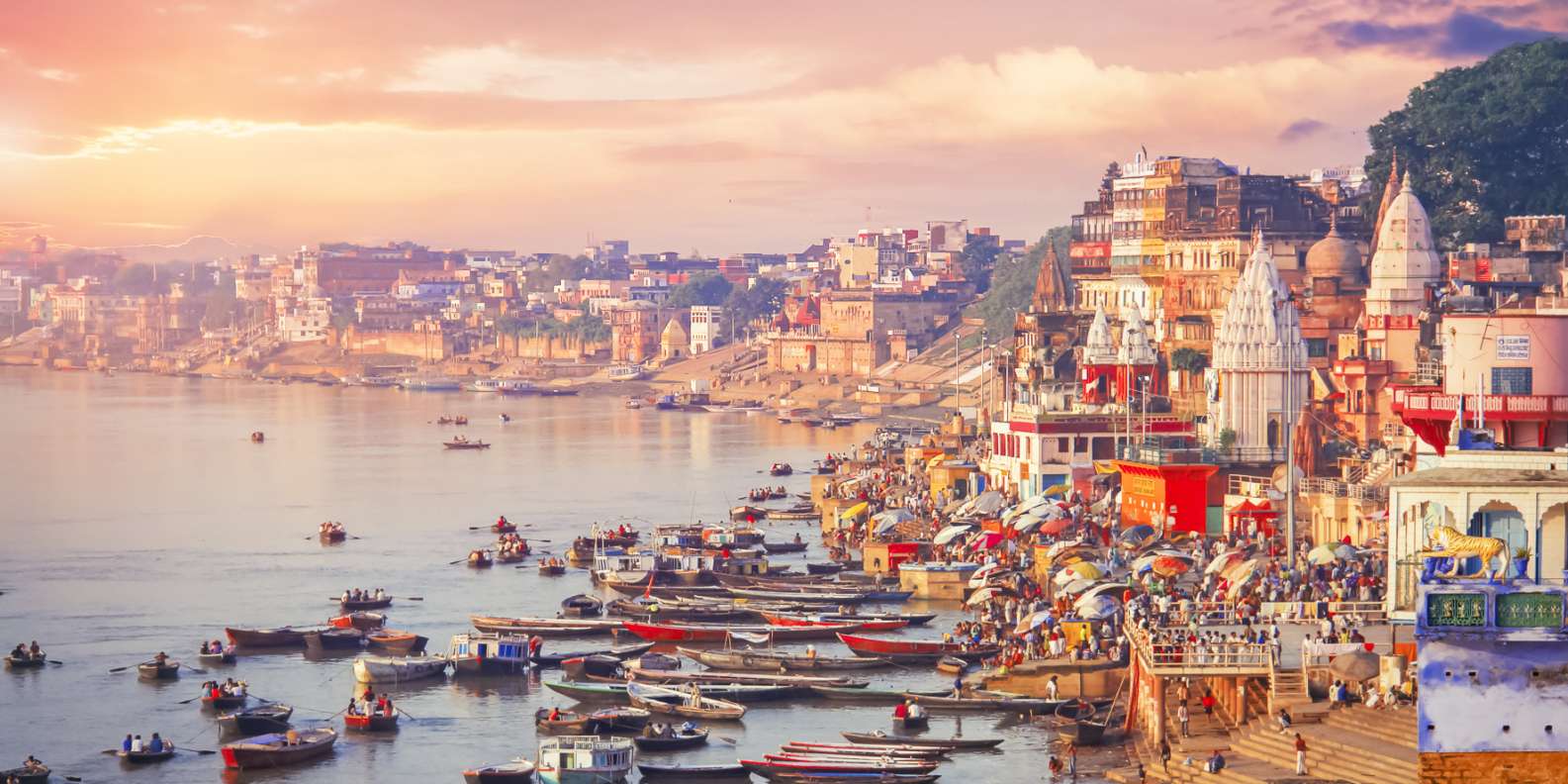
- Budget: ₹10,000 – ₹15,000 for a week
- Winter is an excellent time to visit Varanasi with comfortable temperatures. Experience the spiritual vibes along the ghats, witness the Ganga Aarti, and explore the narrow lanes filled with history and culture.
Embarking on a Spiritual Journey: A Comprehensive Guide to Visiting Varanasi, the Riverside City
Varanasi, situated on the banks of the sacred Ganges River, is one of the oldest continuously inhabited cities in the world, known for its spiritual significance and cultural vibrancy. Here’s a comprehensive guide to help you plan your visit to this spiritual gem.
1. Planning Your Trip:
- Best Time to Visit: Varanasi experiences extreme temperatures. The ideal time to visit is during the winter months (October to March) when the weather is pleasant.
- Access Points: Varanasi has an airport (Lal Bahadur Shastri International Airport) and is well-connected by rail and road. Once in the city, auto-rickshaws and cycle rickshaws are common modes of transportation.
2. Accommodation:
- Varanasi offers a range of accommodations, from budget guesthouses to luxury hotels. Staying along the ghats provides a unique experience with views of the Ganges.
3. Must-Visit Places:
- Kashi Vishwanath Temple: One of the holiest Hindu temples, dedicated to Lord Shiva. The temple complex is a significant pilgrimage site.
- Assi Ghat: Known for its serene ambiance, Assi Ghat is a popular spot for yoga and meditation. Attend the evening Ganga Aarti for a spiritual experience.
- Dashashwamedh Ghat: Witness the iconic Ganga Aarti performed every evening, a mesmerizing ritual with priests, fire, and chants.
- Sarnath: Just a short drive from Varanasi, Sarnath is where Buddha gave his first sermon. Explore the Sarnath Archaeological Museum and the Dhamek Stupa.
4. Spiritual Activities:
- Participate in a boat ride along the Ganges during sunrise to witness the ghats come to life and experience the spiritual energy of the city.
- Consider taking a guided walking tour through the narrow lanes (galis) of Varanasi to explore ancient temples, traditional homes, and hidden gems.
5. Cultural Experience:
- Attend the morning rituals by the ghats, including yoga sessions, music performances, and spiritual discourses.
- Explore the narrow alleys of Varanasi, known for their vibrant markets, silk weaving workshops, and street food stalls.
6. Ganga Aarti Experience:
- The Ganga Aarti at Dashashwamedh Ghat is a must-see. Arrive early to secure a good viewing spot, and witness the spectacle of lamps, incense, and devotional chants.
- Consider taking a boat during the Aarti for a unique perspective and a serene experience on the Ganges.
7. Local Cuisine:
- Indulge in the local delicacies of Varanasi, such as Kachori Sabzi, Tamatar Chaat, and the famous Banarasi Paan.
8. Safety Tips:
- Be cautious while navigating the ghats and narrow lanes, especially during crowded times.
- Respect the local customs and traditions. Dress modestly, particularly when visiting religious sites.
Goa – Sun, Sand, and Celebrations:
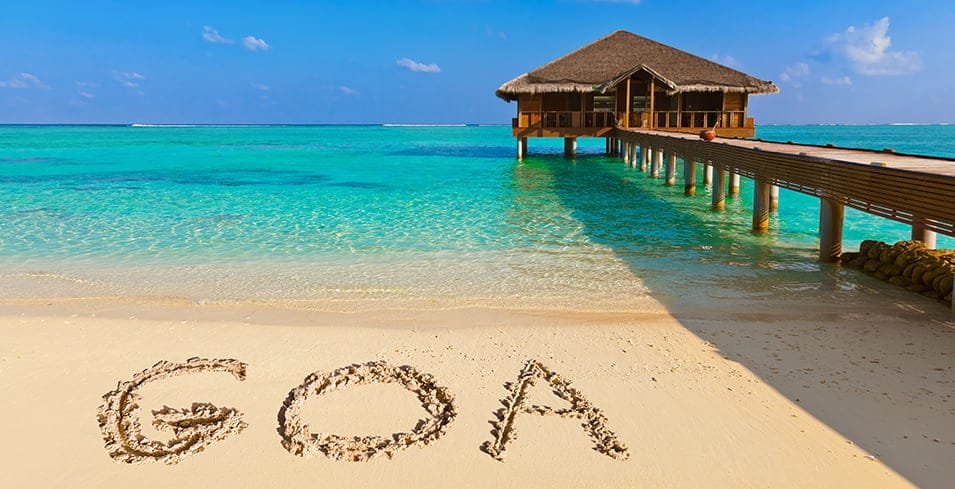
- Budget: ₹20,000 – ₹30,000 for a week
- While Goa is known for its beach parties, winter offers a more relaxed atmosphere. Enjoy water sports, explore the spice plantations, and attend the vibrant Sunburn Festival.
Experiencing the Allure of Goa: A Comprehensive Guide to Your Tropical Getaway
Goa, known for its sun-kissed beaches, vibrant nightlife, and rich cultural heritage, is a sought-after destination on the western coast of India. Here’s a comprehensive guide to help you plan your visit to this tropical paradise.
1. Planning Your Trip:
- Best Time to Visit: The peak tourist season in Goa is from November to February when the weather is pleasant. The monsoon season (June to September) brings lush greenery but frequent rainfall.
- Accessibility: Dabolim Airport is Goa’s international airport, well-connected to major cities. You can also reach Goa by train or bus, with Madgaon and Thivim being major railway stations.
2. Accommodation:
- Goa offers a diverse range of accommodations, from beachfront resorts to budget-friendly guesthouses. Choose a location based on your preferences, whether it’s the vibrant beaches of North Goa or the serene landscapes of South Goa.
3. Must-Visit Beaches:
- Baga Beach: Known for its energetic atmosphere, water sports, and beach shacks offering delicious seafood.
- Palolem Beach: A crescent-shaped beach in South Goa, known for its calm waters and vibrant nightlife.
- Anjuna Beach: Famous for its Wednesday flea market and beach parties, Anjuna is a hub for backpackers and party enthusiasts.
4. Historical and Cultural Exploration:
- Old Goa: Explore the UNESCO World Heritage Site of Old Goa, home to iconic churches like the Basilica of Bom Jesus and Sé Cathedral.
- Fort Aguada: A well-preserved Portuguese fort with stunning views of the Arabian Sea. Don’t miss the lighthouse and the historic Aguada Jail.
5. Adventure and Water Activities:
- Engage in water sports like parasailing, jet-skiing, and banana boat rides at popular beaches like Calangute and Colva.
- Take a river cruise on the Mandovi River, offering a serene experience with live music and dance.
6. Nightlife in Goa:
- Goa is renowned for its vibrant nightlife. Head to Tito’s Lane in Baga or Mambo’s in Anjuna for a lively clubbing experience.
- Enjoy beachside parties and silent discos, a unique experience where you dance to music through wireless headphones.
7. Local Cuisine:
- Savor Goan cuisine, known for its spicy and flavorful dishes. Try Fish Curry Rice, Prawn Balchão, and Bebinca, a traditional Goan dessert.
- Explore beachside shacks for fresh seafood, and visit local markets for street food delicacies.
8. Safety Tips:
- Be cautious with your belongings, especially in crowded areas and beaches.
- Stay hydrated, use sunscreen, and wear appropriate clothing to protect yourself from the sun.
9. Transportation within Goa:
- Rent a scooter or car to explore the beaches and attractions at your own pace.
- Use local buses or hire a taxi for longer distances or areas not easily accessible by public transport.
10. Unique Experiences:
- Visit the Dudhsagar Waterfalls, especially during the monsoon, for a breathtaking cascade surrounded by lush greenery.
- Attend a local festival or carnival, such as the vibrant Goa Carnival held in February.
Rishikesh – Yoga Capital
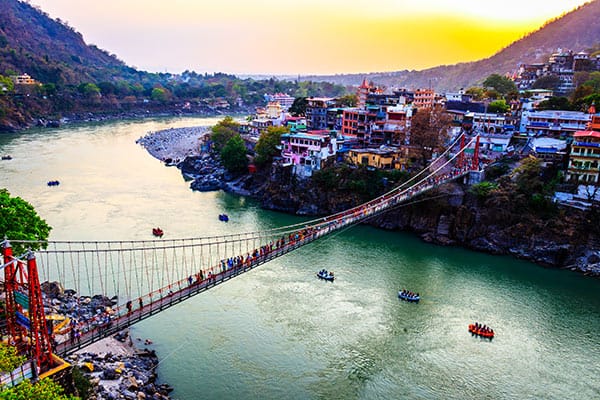
- Budget: ₹10,000 – ₹20,000 for a week
- Winter is an ideal time for yoga and adventure in Rishikesh. Attend yoga retreats, experience the Ganga Aarti, and indulge in thrilling activities like river rafting.
Embarking on a Spiritual Retreat: A Comprehensive Guide to Visiting Rishikesh
Nestled in the foothills of the Himalayas along the banks of the Ganges River, Rishikesh is a spiritual haven known for its ancient temples, yoga ashrams, and breathtaking landscapes. Here’s a comprehensive guide to help you plan your visit to this tranquil destination.
1. Planning Your Trip:
- Best Time to Visit: Rishikesh is a year-round destination, but the weather is most pleasant from September to November and February to April. Avoid the monsoon season (July to September) due to heavy rainfall.
- Accessibility: The nearest airport is Jolly Grant Airport in Dehradun, about 35 kilometers away. Rishikesh is well-connected by road, and Haridwar Junction is the closest railway station.
2. Accommodation:
- Rishikesh offers a range of accommodations, from budget-friendly guesthouses to riverside resorts. Choose a place that aligns with your preferences, whether it’s a peaceful retreat or a lively atmosphere near the ghats.
3. Spiritual Exploration:
- Triveni Ghat: Attend the evening Ganga Aarti at Triveni Ghat, where priests offer prayers to the Ganges River. The aarti is a mesmerizing ritual accompanied by hymns and the glow of traditional lamps.
- The Beatles Ashram (Maharishi Mahesh Yogi Ashram): Visit this ashram where The Beatles stayed in the 1960s. It’s now open to the public and offers a serene space for meditation.
- Neelkanth Mahadev Temple: Located amidst scenic surroundings, this temple is dedicated to Lord Shiva and is a significant pilgrimage site.
4. Yoga and Wellness:
- Rishikesh is often referred to as the “Yoga Capital of the World.” Join a yoga retreat or attend classes at one of the many ashrams, such as Parmarth Niketan or The Art of Living International Center.
- Experience holistic wellness with Ayurvedic treatments and spa therapies available at various wellness centers.
5. Adventure Activities:
- For adventure enthusiasts, Rishikesh offers river rafting in the Ganges, trekking in the nearby Himalayas, and camping along the riverbanks.
- Take a thrilling zip-lining or bungee jumping experience at Shivpuri, a short distance from Rishikesh.
6. Local Cuisine:
- Relish vegetarian and satvik (pure) cuisine in Rishikesh. Try local dishes like Aloo Puri, Kachori, and the popular Chotiwala Thali.
- Visit the local market for traditional snacks, sweets, and Ayurvedic products.
7. Safety Tips:
- Rishikesh is generally safe, but be cautious with belongings, especially in crowded areas and markets.
- Follow safety guidelines for adventure activities and check the weather conditions before planning outdoor excursions.
8. Transportation within Rishikesh:
- Auto-rickshaws and cycle rickshaws are common modes of transportation within the city.
- Hire a taxi or use shared transport options for longer distances and excursions to nearby attractions.
9. Cultural Etiquette:
- Dress modestly, especially when visiting temples and ashrams.
- Respect the local customs and traditions. Seek permission before taking photographs in sacred spaces.
10. Unique Experiences:
- Participate in the International Yoga Festival held annually in March, attracting yoga enthusiasts from around the world.
- Take a nature walk along the riverbanks during sunrise or sunset for a serene and picturesque experience.
Munnar – Tea Gardens and Hills
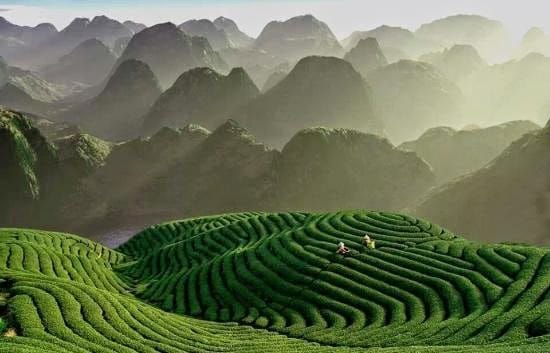
- Budget: ₹15,000 – ₹25,000 for a week
- The Western Ghats in Kerala offer a pleasant escape in winter. Explore Munnar’s tea plantations, enjoy a houseboat ride in Alleppey, and savor the local cuisine.
Exploring the Tranquil Beauty of Munnar: A Comprehensive Guide to Tea Gardens and Hills
Nestled in the Western Ghats of Kerala, Munnar is a picturesque hill station renowned for its lush tea gardens, misty hills, and serene landscapes. Here’s a comprehensive guide to help you plan your visit to this tranquil haven.
1. Planning Your Trip:
- Best Time to Visit: The ideal time to visit Munnar is from September to March when the weather is cool and pleasant. During the monsoon season (June to August), Munnar transforms into a lush green paradise.
- Access Points: The nearest airport is Cochin International Airport, and the nearest railway station is Aluva or Ernakulam. Munnar is well-connected by road, and you can hire a cab or use public transportation.
2. Accommodation:
- Munnar offers a range of accommodations, from luxury resorts to budget-friendly guesthouses. Consider staying in a tea estate bungalow for an immersive experience amid the plantations.
3. Must-Visit Places:
- Tea Gardens: Explore the vast tea estates that blanket the hills of Munnar. Visit Tata Tea Museum to learn about the tea-making process and the history of Munnar’s tea industry.
- Mattupetty Dam: Enjoy the serene beauty of Mattupetty Dam and the surrounding hills. Boating is available on the dam, offering panoramic views of the landscape.
- Eravikulam National Park: Home to the endangered Nilgiri Tahr, this national park is known for its rolling hills and diverse flora. The Anamudi Peak, the highest peak in South India, is located within the park.
4. Scenic Drives:
- Take a drive along the winding roads of Munnar, especially on routes like the Munnar-Marayoor Road and Munnar-Thekkady Road. The scenic landscapes and tea plantations are a treat for the eyes.
- Stop at viewpoints like Top Station and Pothamedu Viewpoint for breathtaking vistas of the Western Ghats.
5. Adventure Activities:
- Munnar offers trekking options for all levels. The Chokramudi and Meesapulimala treks are popular for their scenic beauty.
- Engage in bird watching and nature walks in the lush Shola forests surrounding Munnar.
6. Local Cuisine:
- Relish local Kerala cuisine in Munnar. Try the traditional Sadhya, Appam with Stew, and seafood delicacies.
- Visit local bakeries for freshly baked treats like banana cake and Munnar’s famous plum cake.
7. Safety Tips:
- Wear comfortable clothing and carry a light jacket, especially during the evenings when the temperature can drop.
- Follow safety guidelines while trekking, and hire experienced guides for more challenging treks.
8. Transportation within Munnar:
- Hire a local cab or use auto-rickshaws for short distances within Munnar.
- Consider renting a bike or a car for more flexibility in exploring the scenic landscapes.
9. Unique Experiences:
- Stay in a tea estate bungalow for an authentic experience. Many estates offer guided walks through the plantations.
- Visit Kolukkumalai, the highest organic tea plantation in the world, for a unique tea-tasting experience.
10. Local Culture:
- Attend a traditional Kathakali dance performance or a classical music concert to immerse yourself in Kerala’s rich cultural heritage.
- Interact with the locals to learn about the customs and traditions of the region.
Andaman and Nicobar Islands – Tropical Paradise
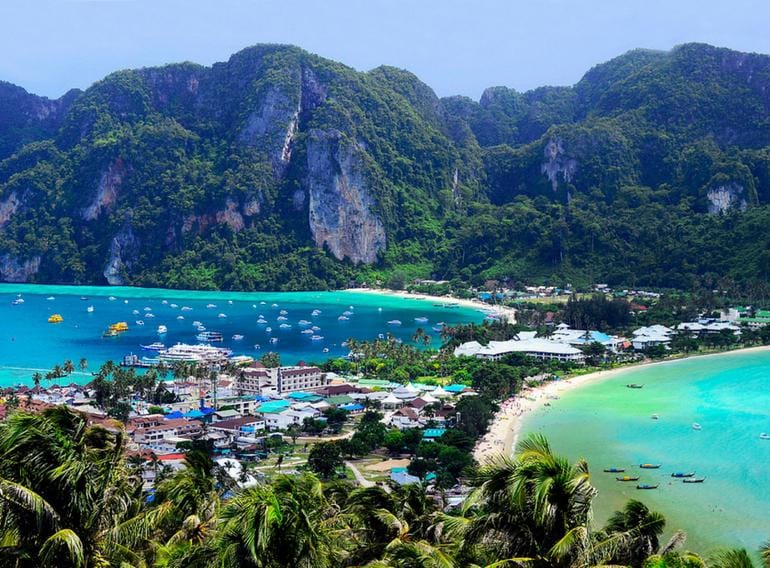
- Budget: ₹25,000 – ₹40,000 for a week
- Experience the pristine beaches, coral reefs, and diverse marine life in the Andaman Islands. Water activities like snorkeling and scuba diving are best enjoyed during the winter months.
A Tropical Paradise Unveiled: A Comprehensive Guide to Exploring the Andaman and Nicobar Islands
Nestled in the Bay of Bengal, the Andaman and Nicobar Islands are a mesmerizing archipelago known for their pristine beaches, vibrant coral reefs, and lush tropical landscapes. Here’s a comprehensive guide to help you plan your visit to this tropical paradise.
1. Planning Your Trip:
- Best Time to Visit: The peak tourist season is from November to April when the weather is pleasant with clear skies and calm seas. Monsoon season (May to October) brings heavy rainfall and rough seas.
- Accessibility: Port Blair, the capital, is the main gateway. You can reach the islands by air, with Veer Savarkar International Airport in Port Blair, or by sea via regular passenger ships from Kolkata, Chennai, and Vishakhapatnam.
2. Accommodation:
- The Andaman and Nicobar Islands offer a range of accommodations, from luxury resorts to budget-friendly guesthouses. Popular areas to stay include Port Blair, Havelock Island, and Neil Island.
3. Must-Visit Islands:
- Havelock Island: Known for Radhanagar Beach, often regarded as one of Asia’s best beaches. Havelock is also a hub for water activities like scuba diving and snorkeling.
- Neil Island: A tranquil escape with stunning beaches like Laxmanpur and Bharatpur. Neil Island offers a laid-back atmosphere and is ideal for relaxation.
- Ross Island: Once the administrative headquarters during British rule, Ross Island now stands in ruins but is a fascinating historical site.
4. Adventure and Water Activities:
- Explore vibrant coral reefs by engaging in snorkeling and scuba diving. Havelock and Neil Islands offer excellent dive sites like Elephant Beach and Johnny’s Gorge.
- Experience sea walking at North Bay Island, where you can walk on the ocean floor while surrounded by marine life.
5. Cellular Jail:
- Visit the Cellular Jail in Port Blair, a significant historical site that once housed political prisoners during India’s struggle for independence. Attend the light and sound show for a poignant experience.
6. Local Cuisine:
- Indulge in fresh seafood, coconut-based dishes, and local flavors. Try Andaman’s traditional dishes like Lobster Curry, Cutlet, and Fish Amritsari.
- Visit local markets in Port Blair to sample street food and buy indigenous spices.
7. Safety Tips:
- Respect marine life and coral reefs during water activities. Follow guidelines provided by instructors for responsible snorkeling and diving.
- Be cautious during the monsoon season due to rough seas. Check weather conditions before planning boat trips.
8. Transportation within the Islands:
- Ferries and boats are the primary modes of transportation between islands. Private and government-operated ferries connect major islands.
- Rent scooters or bicycles for local transportation on islands like Havelock and Neil.
9. Unique Experiences:
- Visit Baratang Island to witness the unique limestone caves and the enchanting journey through dense mangrove forests.
- Explore the pristine beaches of Long Island, known for its tranquility and natural beauty.
10. Local Culture:
- Interact with the indigenous tribes like the Jarawas and the Sentinalese, respecting their privacy and adhering to regulations that restrict interaction.
- Attend local cultural events and festivals, such as the Subhash Mela, to experience the vibrant culture of the islands.
Travel Tips:
- Plan and book in advance to secure the best prices for accommodations and activities.
- Check for any travel restrictions or entry requirements due to the ongoing global situation.
- Pack layers and suitable winter clothing, especially if visiting hilly or snow-covered regions.
- Embrace the local culture and cuisine for a complete travel experience.
Whether you seek the tranquility of snow-capped mountains or the vibrant celebrations in the desert, India offers a diverse range of experiences during the winter season. Each destination is a unique tapestry of culture, nature, and adventure, waiting to be explored.







